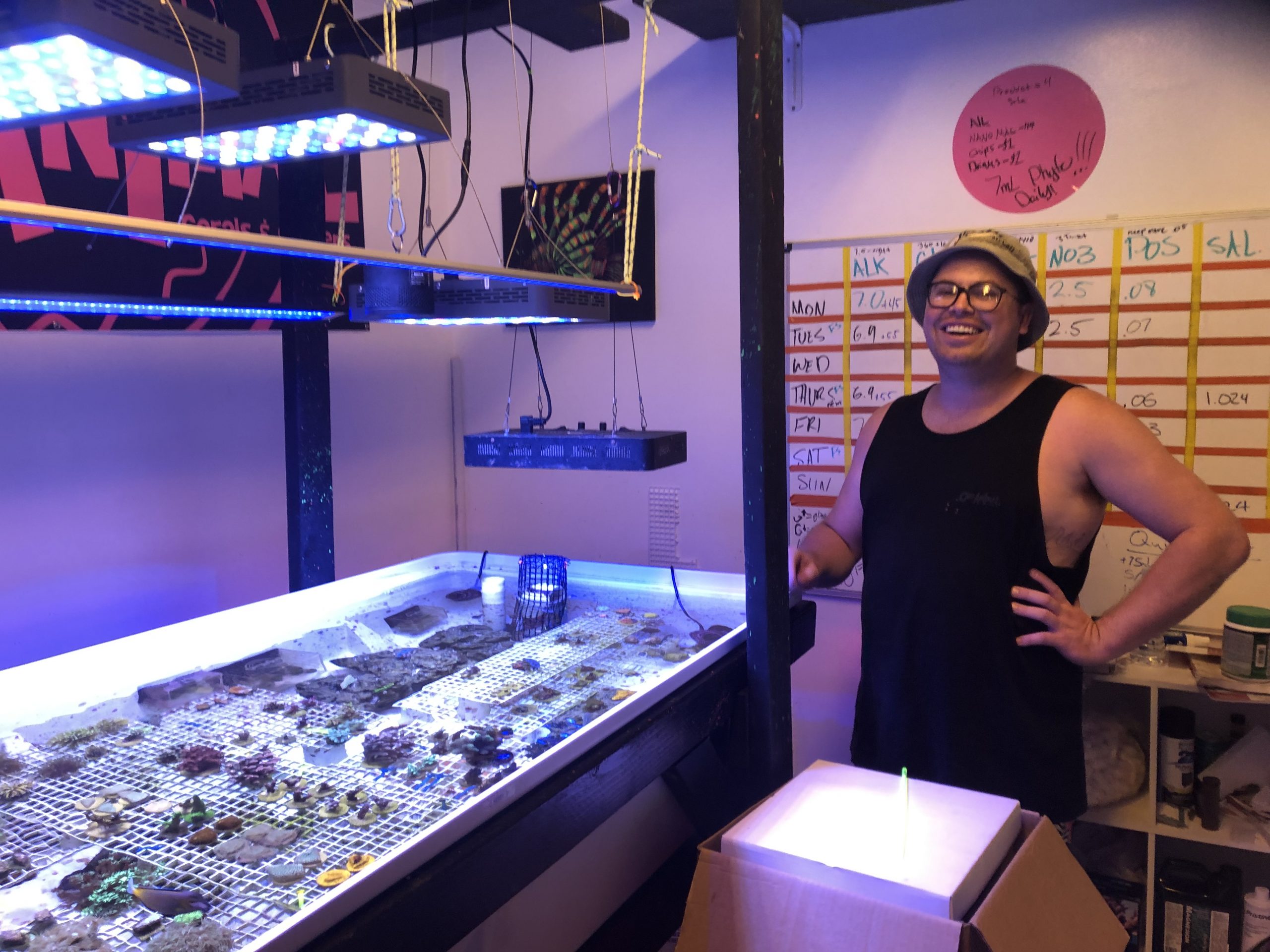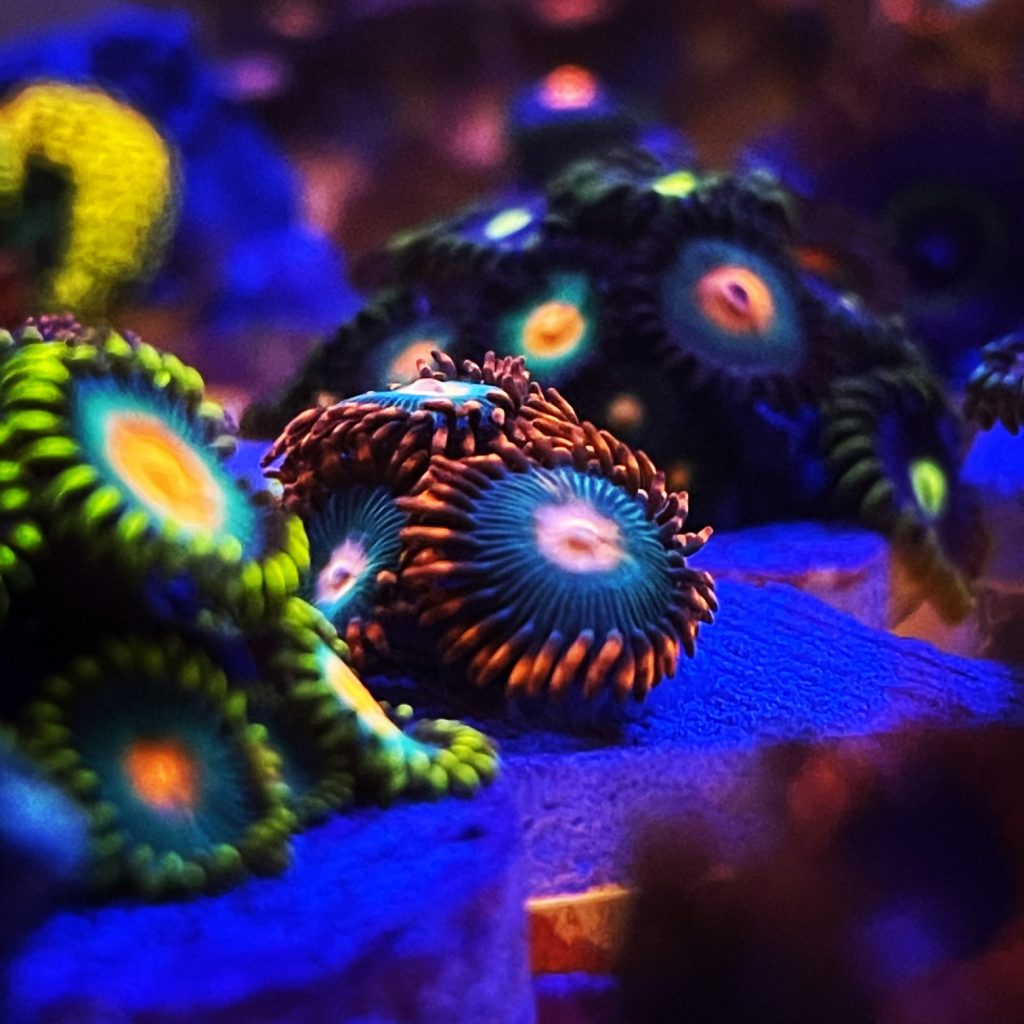Keeping Odd Animals

The pets we keep are an extension of our personalities. Dog people are often distinct personality types from cat people and when you get into reptiles, fish, and other exotic pets, it says even more about the owner. At Odd Animal Corals & Critters, unique pets are their business. Odd Animals was opened by fellow coral reef enthusiasts, or “reefers” as they call themselves, Ryan Hughes, Sergio Castaneda, and Nicholas Juarez. I recently met with Ryan at their store to talk about coral keeping and Odd Animals.
Ryan originally got into coral as a soothing hobby as an aside to his work in elderly care, which often comes with an emotional toll. His passion grew from there, growing his collection and even starting a coral blog. The three of them met at a pet store down in Ventura that sells coral and soon became fast friends. They were all searching for a project that could bring a little peace of mind during these times, and when Ryan found a lead on an affordable spot in the front of a building, they jumped on the opportunity, moving into the space at the beginning of this year.
Odd Animals is in a warehouse off Bath and Carrillo streets. Boats sit out front, and surfboards line the hallways of the building, making a fitting environment for the coral shop. There is a large flat aquarium in the center of the store with tanks and terrariums adorning shelves and stands around the room. As we begin to talk, Ryan flips on a sprawling overhead light and says we’re “going blue,” filling the room with a deep azure hue. The light essentially acts as a steroid, pumping up the blue wavelengths, which is what normally reaches coral through the water. Ryan puts a pair of glasses on me that filters out the orange spectra, the contrasting color to blue, and the tank takes on a new light. The coral glowing like some animated aquatic psychedelic poster.
The world of coral is mostly differentiated between the hard corals that contain a calcium carbonate exoskeleton and the soft corals that do not. Within the hard, or stony, coral category, they can be further split between Small Polyp Stony (SPS) and Large Polyp Stony (LPS) coral. LPS coral are composed of a large single polyp (think of it as the coral’s “body”), or sometimes several polyps, and have an inflatable body that flutters and sways in the flowing water. SPS corals are the more traditionally recognized type and have rigid structures covered in a microcosm of thousands of tiny polyps.

Odd Animals carries a wide variety of SPS, LPS, and soft coral (or “softies” as reefers call them). In addition to water flow, the actual chemistry of the water is important, and each coral type requires their own specific water conditions. The LPS and SPS are grown in the central tank while the softies are kept in their own smaller tank. Besides monitoring the salinity of the water, several other water characteristics including alkalinity, calcium, nitrates, phosphates, and magnesium, must be monitored to maintain hard coral. The water alkalinity, or buffering capacity, acts as “gasoline” for the coral, allowing them to convert calcium into its skeleton and process the nitrates and phosphates which often get expressed as color. Magnesium is basically a carrier salt that assists these processes. Soft corals do not have calcium carbonate skeletons so have simpler nutrient requirements. This naturally makes them a little better for beginners. Besides the occasional phosphate adjustment, Ryan recommends changing the water of a soft coral tank about every two weeks to keep the water clean.
On the wall of the shop is a whiteboard that tracks their daily additives and allows them to maintain the proper water chemistry. Several 55-gallon drums sit in the corner, forming their hand-built Reverse Osmosis (RO) and Deionizer (DI) water processing system that strips away all of the extraneous biomass, compounds, and ions found in tap water. This allows them to rebuild the water chemistry to the appropriate amounts for the various tanks. For such a large tank, they use pharmaceutical grade additives for their water adjustments and the math of how much to add can get complicated. Thankfully there are online calculators that simplify this process. For smaller hobbyist tanks however, there are commercial additives that have more direct instructions.
Ryan mentions that bacteria is often one of the most overlooked issues and there are a variety of solutions when this becomes an issue. Their large aquarium has a separate smaller tank below it where the water is fed through algae that helps process excess nitrates and phosphates. There are also several resident fish that keep the coral company and provide their own cleanup benefits for the tank. With coral, it really is dependent on the tank size and setup and each little habitat will have its own specific upkeep requirements. Oftentimes beginners will want a smaller tank, but Ryan notes that larger tanks are more resilient and any issues that do arise are easier to address because of the greater volume of water.
Most of Odd Animals’ offerings are between $25-$60 however corals can go from ten to hundreds of dollars depending on their scarcity, size, and type. Of course, once purchased, the food and upkeep for coral is inexpensive with lights and electricity often being the priciest component. Ryan has always been into animals, including falconry, where he used to help take care of Ivan the Red-tailed Hawk at the Santa Barbara Natural History Museum. Eventually he hopes to help set up coral enclosures for local museums. In the shop, they have several other fun pets for sale including a range of vibrantly colored tree frogs and a selection of tarantulas. Despite their creepy-crawly reputation, tarantulas make wonderful pets. They are easy to take care of and come in their own dazzling display of colors.
The shop has been doing well since opening and they are already looking to expand into a new space. Although appointments are recommended, Ryan adds that people can always feel free to drop in with questions. Visiting children have a blast looking at the vibrant tanks and learning about sea life and other odd animals.
Visit oddanimalcorals.com for more information on store hours and inventory.







